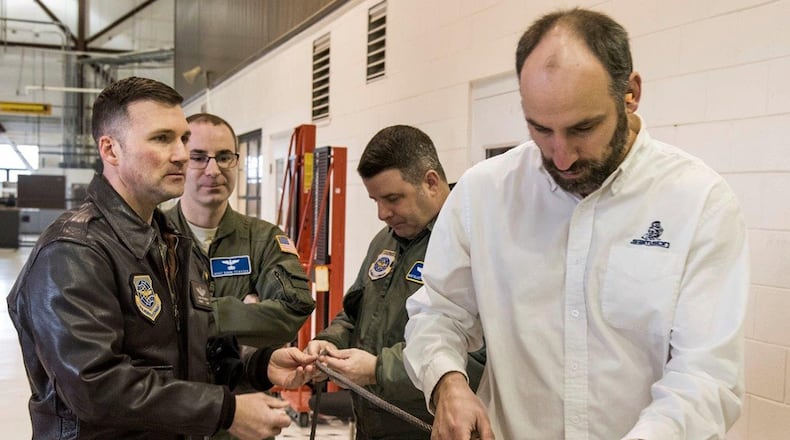The Air Force Research Laboratory’s Advanced Power Technology Office is changing this material to one that is lighter and safer.
APTO has successfully designed, developed and tested a synthetic winch cable for the aircraft. The new cable replaces existing cables while being 40% cheaper and significantly lighter.
Measuring 280 feet, the current steel cable weighs in at a hefty 80 pounds compared to the new synthetic cable’s 14 pounds, equating to an 83% lighter cable. Removing excess weight results in less fuel consumption and improved mission capabilities.
“It’s about creating a safer winch cable for the C-17,” said Ed Clark of the APTO Office. “Serious injury occurs when a steel cable breaks, eliminating those injuries is imperative.”
“The change from steel to a synthetic material is most noteworthy in the significant weight difference,” said Senior Master Sgt. Jeff Witherly, C-17 evaluator loadmaster, Scott Air Force Base, Illinois. “The cable is simply easier to move, maneuver and manipulate around the cargo compartment. The fact that it does not retain energy when it breaks is a huge safety advantage as it will not whiplash if it were to fail.”
During the first quarter of 2020, six sets of cables will be installed on two aircraft at three different operational bases. The Air Mobility Command and the C-17 Program Office will evaluate them for approval as a suitable substititue.
Samson Rope Company is working with the crew to design the system. They manufacture industry-specific synthetic rope that is engineered to meet various demands.
Upon approval, the fleet will be upgraded with the new synthetic cables and will become an Air Force-approved, commercially available item that can be procured for all C-17 aircraft.
The Air Force Research Laboratory is the primary scientific research and development center for the Air Force. AFRL plays an integral role in leading the discovery, development, and integration of affordable warfighting technologies for our air, space, and cyberspace force. With a workforce of more than 11,000 across nine technology areas and 40 other operations across the globe, AFRL provides a diverse portfolio of science and technology ranging from fundamental to advanced research and technology development.For more information, visit www.afresearchlab.com.
About the Author
